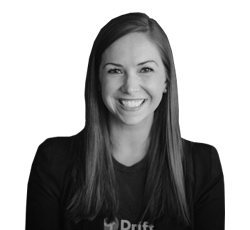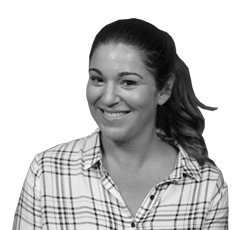How to improve user activation by establishing the right product habits
Brian Balfour
|
CEO & Founder
of
Reforge


Brian Balfour


Episode Summary
Today is a very special episode as we are celebrating our first anniversary of Churn.FM. We have now published a new episode every week for 52 weeks straight and what better way to celebrate the anniversary than by having the guest of our very first episode back on the show!
This week we have Brian Balfour, Founder, and CEO of Reforge. Reforge is a career development programs for experienced tech professionals in product, marketing, data, design, and engineering co-authored by Brian Balfour, Andrew Chen, and Sean Clowes.
In this episode, Brian shared his new learnings on churn and retention since our last chat a year ago, why understanding your customer's habits are important to improving user activation, and a deep dive into the concept of survival analysis.
Brian also shared his insights on why you should focus on a specific user activation flow, the importance of a vendor-champion relationship, and why jumping into quantitative data too fast can be misleading.
Brian Balfour
Recommends
Why Retention Is The Silent KillerThe One Growth Metric that Moves Acquisition, Monetization, and ViralityMentioned Resources
Transcription
Andrew Michael
Hi, Brian. Welcome to the show.
Brian Balfour
Thanks for having me.
Andrew Michael
It's great to have you on the show. For the listeners. I think Brian is someone who needs no introduction. And it's actually a very special episode today because it's our one year anniversary of the show. Brandon was actually the first episode ever aired, and now he's gonna be the first episode of The New Year, and also one of the most listened to episodes. If you haven't heard that one already, definitely make sure you go back and listen to episode one with Brian. And if you don't know who he is, he's also he is the CEO and founder of reforge reforge develops career development programs for experienced tech professionals and product marketing, data design engineering, and prior to reforge. Brian was the VP of growth at HubSpot, where he led the growth team on new products within HubSpot. He's also been a part of building investing and advising over 40 startups, some of which bombed out and others went on to billion dollar successes. So my first question for you today, Brian is what has been the biggest new learning for you when it comes to churn and retention and starting to build reforge?
Brian Balfour
Well, first of all for one year, I just want to congratulate you. I feel like we should be like eating cake while recording this podcast or something like that. But yeah, turn in retention. So the biggest learning I mean, there's a lot, I think. So I think every buddy knows by now that it's probably one of the most impactful long term levers of the company. I think we've written about it a lot, every forge about how it's kind of this foundation that and as you improve retention, you also tend to improve all of these other factors, like monetization in acquisition. But, and so I think everybody, every company kind of gets that important. But the mistake is like in how you kind of approach to fixing a problem. So the, the, the challenges arise of like, people don't really understand kind of the difference between the outputs and the inputs. And so retention is really, an output churn is also an output. And so it's impossible for teams to kind of sit around and action against how do we improve retention or churn, it always has to be broken down in To the inputs. And so one of the things that we think a lot about it, or just that, if retention is the output, then the three inputs into improving resurrection or improving retention is activation, engagement and resurrection or some kind of sometimes called reactivation. And so if you want to improve retention, you obviously have to understand like how to measure that output and how to analyze that output. But when it actually comes to improving, you have to like focus on one of these three areas. And then these three areas kind of break down into even a lot more depth, depending on which one you tend to focus on. But almost all of the mistakes kind of stem from that is like not understanding how these things kind of actually relate to each other. And understanding kind of that that difference between which part of like this ecosystem is, is output versus inputs. I think the second thing is just, this is no it's a really hard lever to move. There's no impactful, but also very hard in the sense that I think, to really move the lever, you're probably always talking about fairly significant product changes. And but most people want to improve retention by starting with the easier stuff like the notification or communication layer, whether that's like emails or or something else, then that kind of disappointed by the results. And so, it you know, it's one of these things where it's a really meaningful, impactful problem to work on. But we see like a lot of companies and products, not willing to make the significant product and engineering investment to actually address the problem and move the levers that need to be moved to make that meaningful impact. So I think like, those are the two of the biggest things. I know we're going to go deeper on on some of these elements, but at a high level kind of looking at across, you know, like hundreds of companies and how they're approaching these problems. Those are kind of the two biggest sources of mistakes.
Andrew Michael
Yeah, absolutely. Definitely. See that as well as that the focus typically when the problem first arises is we have a general attention problem within the company. But then there's always a sort of luck. Where do we get started now? And also, as you mentioned, sort of not understanding what are these inputs that are driving the output metric. So really being able to have a grasp and a good framework to work from. And I mentioned this in the first pilot, I think that's one thing that reforge does exceptionally well, is give you really good frameworks to be able to go back and attack and challenge and work on the problem itself. And one of those areas you mentioned actually, was activation. And something that I wanted to talk about today with you was in startups, and this actually came up an episode with David Scott quayside. Basically, there's too many areas where he sees churn in being the biggest issue and one is when there's bad onboarding. And people never really establish the value and the other one is when the customer champion leaves. So touching a little bit on sort of the onboarding and the activation flow. How do you make sure you're getting your users and your customers to so that our moment and there have been moments with them establish the value and they've now built a habit around it. What are some of the things that you would advise companies to do when it comes down to analyzing their activation flow? And how would they go about understanding which areas there could be making improvements and how they should be improving it?
Brian Balfour
Well, I think you mentioned a key word there, which is the word habit. So I think most of the time when I see activation and onboarding teams working on things, they're not actually thinking about this in terms of how do we establish the habit with the user. The habit, you know, is when you're seeing somebody do some type of core behavior, you know, you know, across multiple successive time periods, right, like they're showing that repeat behavior. But I think kind of the, the fallacy and, and popularization of like Facebook, seven friends in 10 days, kind of metric has moved teams to focus more on things that kind of stopped short of actually building the habit. And so that that's first and foremost is like I think people need to form like a true qualitative understanding around what does an actual habit look like for my user or customer. And it's different, right? Like, I think in SAS in this test cases, like, you know, the early days of HubSpot, where we are selling like this all in one, you know, email marketing tool, it would, you know, take months for people to get to that establishing that habit, because the tool required a lot of setup and exporting contacts into the tool and setting up some data and some lists and like all of these types of things. And so like in those types of scenarios, the SAS scenarios, people tend to like, convert people, they go through like one customer on boarding call, and like that's what they that's how they kind of think about like their onboarding, experience, but so most of the time, actually, the time period to establish a habit for a lot of products ends up being much longer than people realize and And so he had to, like, align the energy around that that entire time period around like how to improve, how to improve and establish that habit. Because until that habit is established, people are fundamentally in like a different mindset. Then kind of like post habit establishment. But once you form that qualitative understanding, then you have like what a habit looks like, then you can work backwards of like, what does that experience look like from like the point of conversion to establishing the habit. And so, this kind of like gets to the second big point, it's not just about thinking about establishing the habit, but doing that and then working your way backwards. Also, a lot of times, like the biggest mistake is like you work from the conversion point forwards. But when you do that you don't really understand like the destination that you're trying to get them to, and like what all the steps are and so starting with that destination and deconstructing that destination backwards, gives you a set of like more actionable things and points and steps. along the journey that you can start to build the product around, align your like customer success to Team success teams if you're a SaaS company, or or like other kind of like notification strategies, incentive strategies, things of that nature. Yeah, I think the other thing about this, that around establishing a habit is that there are products where you're tapping into a pre existing habit. And there are products that where you're establishing the new habit. And to kind of exemplify both of these things. I think a really good use case around this is calm, which is like, the meditation and sleep app. Yeah, so calm started off as a meditation app. And, and they, you know, establishing like, a meditation routine for a lot of users is basically you're establishing a new habit. That is a much, much harder task than tapping into a pre existing habit. So done, Wang, who's like the Chief Product officer there now and has worked on their growth. He's like that team is just absolutely killed. It has like told the story and reforge about how they layered on the use case of their product of around sleep. Well, sleep is like a pre existing habit, right? Like we all sleep, we all have to sleep. And it's a really important like problem and habit. And so they're like a stout like getting a user to use your product around a pre existing habit that they already have, ends up being a much more, much easier task. And so that's why you see like all of these products, like anything to do with like, workouts, or diets, or like new productivity routines, and my to do list, these things are real, these things have really low activation rates, typically, because establishing a new habit among the user is really, really hard. So you really need to understand like kind of like what type of habit you're actually working with. Because that that starts to inform like how you build your experience, how you look at the numbers, how you establish the metrics, like all of these like Really important things when it comes down to thinking about your activation flow?
Andrew Michael
Yeah, makes a lot of sense. And definitely like I do see this as being a big problem of really like, people falling short of understanding where activation what activation actually means and what onboarding actually means. Because I think it's more often than not, it's really like, very shallow and looking at your app and seeing Okay, what is the key action that somebody needs to get value? How do we get them to that point, okay, that's onboarding or that activation. But really, it's super important to understand what the end goal is, like you said, like, Where do you want them to be like, what is that habit moment look like when they achieving and receiving value on a consistent basis? And then looking back and sort of seeing like, how can you go about getting them to that point where all of your customers are experiencing this value in this habit? The next thing then I think, as well, like once you've been able to do this sort of qualitative comparison, in sort of analyzing your activation flow would probably be to look at sort of survival analysis, as you mentioned in reforge, as well. Can you talk us through a little bit about the concepts of survival analysis and then a segmentation Like, how would you go about segmenting?
Brian Balfour
Yeah, well, I think the, you know, I actually think, you know, before we get into that, I don't think people spend nearly enough time on aligning around like qualitative framing in hypothesis of like, what, what a habit looks like and what the journey to that habit are. And like what the key moments are, a lot of people love to just like jump into the data, there's all sorts of advanced regressions and correlation analyses and all this stuff that you can do. And these things have been made much, much easier by analytics tools like segment and amplitude, and a number of other tools. But, you know, a lot of times you can just like look at that data, hoping that the answer is going to jump out to you. And most of the time it's not and so you really need kind of that qualitative understanding in that context, to to really like, think about, like what this activation experience looks like. But when you go through that qualitative understanding you like, you're like, Okay, well, this is what a habit looks like. To a user, you can typically identify some like key points. along that journey from like signup or conversion to, to habit to that habit. And when you find these like key points along that journey, you can typically align like metrics that indicate that they've like done that behavior or they've like reached that moment in the journey. We generically classify them and reforge as the setup moment, the aha moment inhabit moment. But for other products, there might be like more granular moments, kind of like in between them. But once you have those, then you can then start to do a survival analysis of like how people are like going through the flow through this flow, like who's dropping off who's kind of successful through these moments. But the most important part is the segmentation. So you can segment by a bunch of different ways, whether it's like the channel the audience, the I don't know, the different actions they took, like within their first experience that's kind of like really gets down to product specific, but I think what what a challenge is for everybody is that what you really want to look at the most insightful stuff to look at is really look at the success in failures of people within your target audience, oftentimes, especially, you know, in anything that has some kind of like free flow, you end up a lot of people signing up for a product that just really aren't in your target audience. And that starts to make the data super noisy, especially the failure points, like super, super noisy. And the thing that you really want to tune in on is like the people that you've built this product for, that ended up failing, like those are the people that really have the sixth, like the insights for you to start thinking about how do I improve this activation flow over time, and specifically, you want to compare those failures to the success groups, because that's kind of like where the real insights like start to emerge, right. So you could find people within your target audience that failed. And they might give you a bunch of reasons of like, why they didn't end up activating. But you but, you know, the successful users might have actually encountered those same exact problems, but they got past those problems for some reason or another. And so like comparing and contrasting these groups are the things that start to really kind of both bubble up and emerge on the actual problems that are causing your intended audience to fail through this activation flow, and things that you can like start to optimize things that you can start to optimize around. This is especially problematic and like release stage companies who are still like, really figuring out like, who their audience is, and they tend to do these big PR and promotional announcements and so they get a huge swath of like tire kickers coming in to the product and trying out and then they have like super x super low activation rates and then they go down this like black hole of figuring out like what the problem is, but but what they really want to tune into is like out of those all of their signups which ones were actually in our target audience and then out of that target audience who were successful and not successful. And then out of those that were not successful, what were the problems that they like, truly, in encountered that we can like start to address. And so that's that tends to be like how I think about it tends to be how I think about like this this trip survival analysis along the way or like somewhat some of the like kind of the key attributes that that you need to kind of pursue.
Andrew Michael
Yeah, I think it's also very much similar to sort of gathering feedback on the website is that similarly, you will get like thousands of visitors and there's typically three buckets, ones that were always going to be your customers and they would have signed up and then no matter what, then there's the other group that we're never going to be customers that we're just visiting and browsing and then there's that middle group that not too sure and going through, it's very difficult and you get very mixed signals. When you ask them for feedback or trying to get input from like all of your visitors it's really important to understand like who the customers so one of the things actually, we took what ad hoc choice really like doing a post purchase survey and similarly can be sort of like post success. Surveys like asking questions like what nearly made you not converted or what nearly stopped you from achieving your goal today. This is also another great way to sort of be able to get some insights into what are the blockers and barriers of your ideal customer. And then like sort of negating that gathering feedback and input from potentially a larger audience, it's, it's not ever going to be a customer. You mentioned something as well, in terms of use cases and understanding sort of what the activation plan I think this is definitely something that applied to acid hot jar that it took us a while to understand and consider is that if you have multiple tools within your service, and different personas and different use cases, the activation flow in the goals are going to be different. So you mentioned it before looking at sort of the quantitative data, you're just going to get a lot of mixed signals. And in our case, second thing that ends up happening we look at quantitative quantitative data is it's really just an a reflection of what our onboarding is like, what are the key actions we asked him to take in onboarding and that's typically what the data shows us is that the actions we asked him to take first or the most successful actions, but really that's where it becomes key to understanding sort of who's that customer process File, what is their use case? What are they trying to achieve? And then measuring that code. So that thing against the different flows? How do you advise companies like thinking about the different challenges where they have multiple uses of their product tech? Where do you focus energies? Obviously, you can't build like an onboarding and activation experience for for everyone.
Brian Balfour
Yeah, well, I mean, I think this is this is kind of like a key strategic choice is that is that people, you know, oftentimes, when you do a bunch of customer development, or qualitative analysis, you find that a bunch of different use cases and the way that I that we think about use cases and reforge is that it's a combination of a problem and, and the who, so we don't think about it just from the persona perspective, or like what some people like to call like jobs to be done. It's like a combination of those two things. And so when you do a lot of qualitative analysis, you tend to find that a lot of like use cases are present. But just because a use case is present, doesn't mean that strategically choose to optimize and build your product around around it. When this kind of gets back to like the noise thing, like you, you get noise not only in the quantitative data, but in the qualitative data as well. And so I commonly always tell the story from from HubSpot, this happened before that before my time there, but it was, it's told or and over and over, it's like beat into your head in that in the company, because it was one of the pivotal moments is that they three years into the company basically did this analysis and found that they had four different use cases for the product. And, and so, they had like a use case for super technical marketer a use case for an enterprise market or a use case for a super SMB owner and then a use case for like this mid marketing VP. And essentially what was happening is that that because even though those use cases were present, and everybody knew those use cases, President was pulling the product in a bunch of different directions was pulling the marketing and a bunch of different directions, it was pulling, onboarding and activation in a bunch of different directions. And you just can't do that, right? Like that's a recipe for failure. And so you have to like strategically choose which use cases that you're going to want to solve for, and really build around those. And then when you really nail those, then you earn the right over time to either evolve a use case to reach a broader and broader audience, or you layer on new use cases over over time as you gain like the resources to really focus and optimize around those use cases over time. But almost always, right, like, what ends up happening is we have you know, we walk people through this exercise and it's like, oh, well, like I have this use case and this and they like list out five use cases. And they like want to like try to build you know, something for all of them and then you end up building something for none of it. So So this was a really hard problem that, you know, like at HubSpot, they ended up choosing that mid marketing VP is like the starting point and it's kind of evolved over time. And but when they did that, like, like, everything changed for the company, everything that the product got more aligned, and we're able to like ship things faster. The marketing got more lines, you know, there's a temporary dip in like conversion of new customers. But, but that rebounded over time and like, increase in retention increased over a given period of time. And all of that happened just because of like the of just essentially, because, yeah, yeah. 100%. And so like, this is like, I actually think one of the toughest things, and probably one of the biggest failure points for like earlier stage companies. But even like later stage companies as they start to like develop new products, we had to redo the exercise all over again at HubSpot, because we started going into these new product categories. And the same thing happened, right like as we launched these new products, multiple use cases emerged, we had to make a strategic choice about which one that we wanted to solve for To look at it from a bunch of different angles about like the monetization potential, you know, the retention potential, like all of these different factors and so, but but that focus, like the, the worst decision you can make is no decision. I think
Andrew Michael
it is second very, very difficult decision. And I definitely see like it played out a little bit. And I chose were you hesitant to make a decision because you don't want to make the wrong decision, but you feel you know, you need to make it. And I think it was also because it's influenced by so many different opinions, like everybody within the company has an opinion of who they think the ideal customer profile is and who they should be going after. So I think it's also it's really important, like when making these decisions that you have a good process and you're really looking at the data and also doing qualitative feedback as well. We did an exercise a talk trustingly where we took a look at sort of our most successful customers would be classified people who had stayed with us for longer than nine months and they were business customers. We did a panel survey as well looking like the willingness to pay and likelihood to buy a present or new customers. And then we started grouping and taking a look at data that we had of our product usage to try and formulate, okay, who is getting the most value out of products who like is like most likely to bring more value to the company over time and sort of were then able to carve out the segments and understand that really, and for us who I think in a lucky position were turned out, like 65% of our audience made up their ideal customer profile, but for other companies, I think it's not as easy and as black and white, and definitely a coated a very difficult thing to do.
Brian Balfour
Yeah, I mean, there's a really simple exercise you can just do internally is just send out a survey and ask them like, you know, you know, describe who we're solving for, and like the problem that we're solving for and just see like that divergence of answers. And, and then he realized, like, you need to get a lot more specific, and then you need to repeat that specificity over and over and over and over again and then and then the next challenge becomes is like once you dominate that category is like how do you evolve and build like for, you know, the market user to like, expand, expand your use case over time. And then make sure that people kind of get the new definition in your head. So yeah, it's one of these things that just constantly evolves over time.
Andrew Michael
And you mentioned so this was a problem at HubSpot. And another thing I mentioned earlier as well, was the interview David Scott talking about and something I think you mentioned realizing at HubSpot as roles. What when the customer champion in the living that ended up being a big reason for churn at the company? Was this something that you encountered is your time? Was it something that your team took a look at it all or?
Brian Balfour
Yeah, I mean, this is pretty common for any any type of SaaS product that isn't bottoms up, you tend to not have this problem in a bottoms up, take the product because you you have like multiple users on it over time. And so I don't remember when this happened, but at some point, we did an analysis of like, looking at like revenue retention for accounts that had like one user on the account versus just like two users on the account. And the difference was just like dramatic, obviously, the two users account had much, much better retention. And so and so just so a lot of times in the SAS, the SAS cases that it's, you know, just getting getting the tool to like spread internally to more than more than one user is, is like a retention is like a retention lever. So you see, like, there's a lot of like SAS companies that make a strategic choice that they're not going to charge on like a per user basis. HubSpot never, didn't charge on a per user basis, things like Survey Monkey, I believe, charge on a per user basis, because the there's bigger levers or value metrics for them to charge on. And instead, it's about how do you get the tool to spread internally so that if one of them does leave, then it's embedded enough in the work that it creates like a lot of friction to to like, easily replace, but at the same times, this kind of works in your advantage as well. So We certainly saw a lot. And I think a lot of the sass companies that invested in what, what we see is that, as that champion or that person leaves, they, you know, if you execute Well, we'll bring it into their new organization. And so that's like a really hard thing to, it's a really hard thing to track. But over a long period of time, it tends to become a larger and larger portion of potentially of, of like the new users coming in your flow. And in regards to the conversation of activation, this becomes really important because all of a sudden, you have really, really highly educated users coming into that flow. And really, what you want to do in those scenarios is just get the hell out of their way. And not necessarily treat them like a brand, you know, a brand brand new user. And so certainly like as the HubSpot ecosystem grew over time, you know, that ended up like being a new source and so you can attack it from both angles and And, you know, turn the disadvantage into an advantage. And there's different categories that have more turnover than others, right? Like sales tends to be a category that has more turnover, then I don't know, like something like finance or HR, right, they might be on the other end of this other end of the spectrum. And so really kind of depends on on that category in that use case. And coming back to that who again,
Andrew Michael
so interesting like that, you bring it back to the activation side of things. So they've done a full loop and they've gone off come somewhere else. And now, it's about just getting them to that value as fast as possible getting out of the way because they know what to do, and they've used the product many times. So there's one question I want to ask you as well ask every guest and want to put together a hypothetical scenario that you've decided to start a new job and you're either at the company and general retention is not doing well at all. You've been asked to try and turn things around, but you've only been given three months to try and prove some results. What would be some of the things that you would do in the first three months to try make a dent
Brian Balfour
educate the executive team why three months is too short of a time period. It's probably my first step. That's like my cheat my mighty answer to the question, but it's probably actually like
the realistic answer to that question. But if I'm going to focus anywhere,
if I'm going to focus anywhere on the spread, these types of questions are always tough. It's almost for surely going to be. Well, I would go through I would go through the analysis of like, how much how much volume, you know, how much volume do I have in different parts, and I'm probably going to look at the end the entry points in the exit point, so activation and essentially like whatever the exit points, I'm like cancellation insurance or if there's a decent enough volume. If there's a decent enough volume, what I'm going to probably do first is is I'm going to focus on the exit points in a very short period of time, because these are people who are already bought, they've showed you intent, you've educated them, all these types of things and kind of kind of interjecting and saving them in the turn, and in the turn points are, is probably gonna yield the shortest, like the shortest term results. And here, you just have to, like, think about it as like the reverse funnel. So rather than removing friction, you're trying to create friction, but good friction, right? Like you're trying to, you know, remind them of like the value of the product and, and the effort that they put into it and all those types of factors. So if I don't have a lot of volume at that endpoint that I'm probably in first, I'm definitely gonna focus on activation. And what I'd probably do there is, I would just, like do a ton of manual onboarding is what I would do, and it's not scalable long term. But what it's going to do is I'll probably going by manually onboarding a bunch of people, I'm going to probably get a get a lift and activation And therefore retention, I'm going to learn just a ton about the product and other things that we can do to to to improve it more long term. But those things are almost always going to take more than three months. So that's probably Those are probably Those are my first two instincts.
Andrew Michael
Yeah, I really like that. So the manual onboarding approach as well, I think, as you mentioned, with the like the focusing on the churn exit side of things, it'll be a short term, you might see results, but focusing on that activation point is gonna have enormous impact. And then those learnings you can take them into what you get building in which automates and even though it's not scalable to begin with. It becomes sort of what your product roadmap can look when it comes to activation and helping people get to value. The last thing then I want to touch on for today was we chatted last year, you're about two and a half years into the journey now I think must been about three and a half years. And when we last chatted, we spoke about like how you sleep He retention and churn at reforge, specifically. And at that point, I think you only add sort of a seasonal high priced product where it was very difficult and it wasn't really a subscription business back then. Fast forward a year, I think things have started to change. Now with the subscription offering, you're starting to bring in how I has things changed for you like how are you managing this transition, because it's almost a transitionary phase now for the company going from selling like a product once or for trying to get repeat customers to now trying to have a subscription service where you bringing in companies and you're bringing in regular customers?
Brian Balfour
Yes. So we learned a lot. We did the subscription stuff as like a like a beta test in the background. So we still haven't fully rolled it out publicly. We probably won't in the near term. We've learned a lot. It was actually pretty successful. But one we really started thinking about things. We really just started thinking about kind of the broader story. And journey that like our target audience takes in their professional careers, and where we should be really focusing on that. And so we don't really think about ourselves as a school, like what we really want to do is just to help people to the best work of their careers. And, and so doing that actually comes down to like doing the work, like actually applying what you learn. And I think unfortunately, like most schools and most education environments, stop short that just like giving you the certificate, main thing in today's world, like most certificates are becoming pretty useless, some pretty, you know, not valuable. And so we're more excited about how do we participate in your journey, after you finish a rewards program, and you go on the long, hard journey of applying what you learn, because that's really what creates value for you and that's what creates value for your company. And, and also, you know, from a business perspective, I was talking about it from a product strategy perspective. You know, helps us establish more frequent touch points with you, like between, like the seasonality. And so we'll have some stuff that we're beta testing, like this next cohort that's coming up in the spring starts in like mid March, I would love anybody to join. And we'll probably be rolling out a little bit broader this year. So it's the natural case of like, any highly seasonal low frequency business always needs to think about higher frequency more consistent use cases over time to like, maintain that relationship and, and like continue growing over time. So that's a lot of what we're thinking about. So it's been it's been a journey.
Andrew Michael
Yeah. It's very interesting. And like you mentioned, so that seasonal aspect or where the frequency is very big. I think one of the use cases actually, you mentioned and you talk about the case study in the course was Zillow. And I always love that example of you don't buy a house every day. But what Zillow intern did was have the Zillow estimate so you want to check the valuation of your house and see how things have gone up since I've changed And then they started bringing in news and really became sort of a household name. So the next time you're thinking about buying a house, you go to Zillow. So it's an excellent way another way of thinking about sort of the career progression and working and making sure that it's not just about the course. But it's like what the course delivers and how the value continues to grow and how that individual grows as well. So Ron, I mean, is anything else you'd like to leave us with today? I see we up on time as well. It's been a pleasure having you but there's anything I leave the listeners with anything, they should be checking out for anything coming up.
Brian Balfour
No special keep hope everybody keeps fighting the good fight. You know, meaningful work is really hard work. So there's very rarely any shortcuts. And yeah, I just encourage everybody out there to stick with it.
Andrew Michael
Awesome. Well, thanks very much for joining today. wish you best of luck, no going forward and good experiments and looking forward to see what you come up with in the in this year.
Brian Balfour
Awesome. Thanks for having me and congrats on the one year.
Comments


Brian Balfour

A new episode every week
We’ll send you one episode every Wednesday from a subscription economy pro with insights to help you grow.
About
The show

My name is Andrew Michael and I started CHURN.FM, as I was tired of hearing stories about some magical silver bullet that solved churn for company X.
In this podcast, you will hear from founders and subscription economy pros working in product, marketing, customer success, support, and operations roles across different stages of company growth, who are taking a systematic approach to increase retention and engagement within their organizations.
Related
Listen To Next


Robbie Kellman Baxter

EP
61
How to cement trust with new customers in times of a crisis and uncertainty


Rav Dhaliwal


































































































































































































